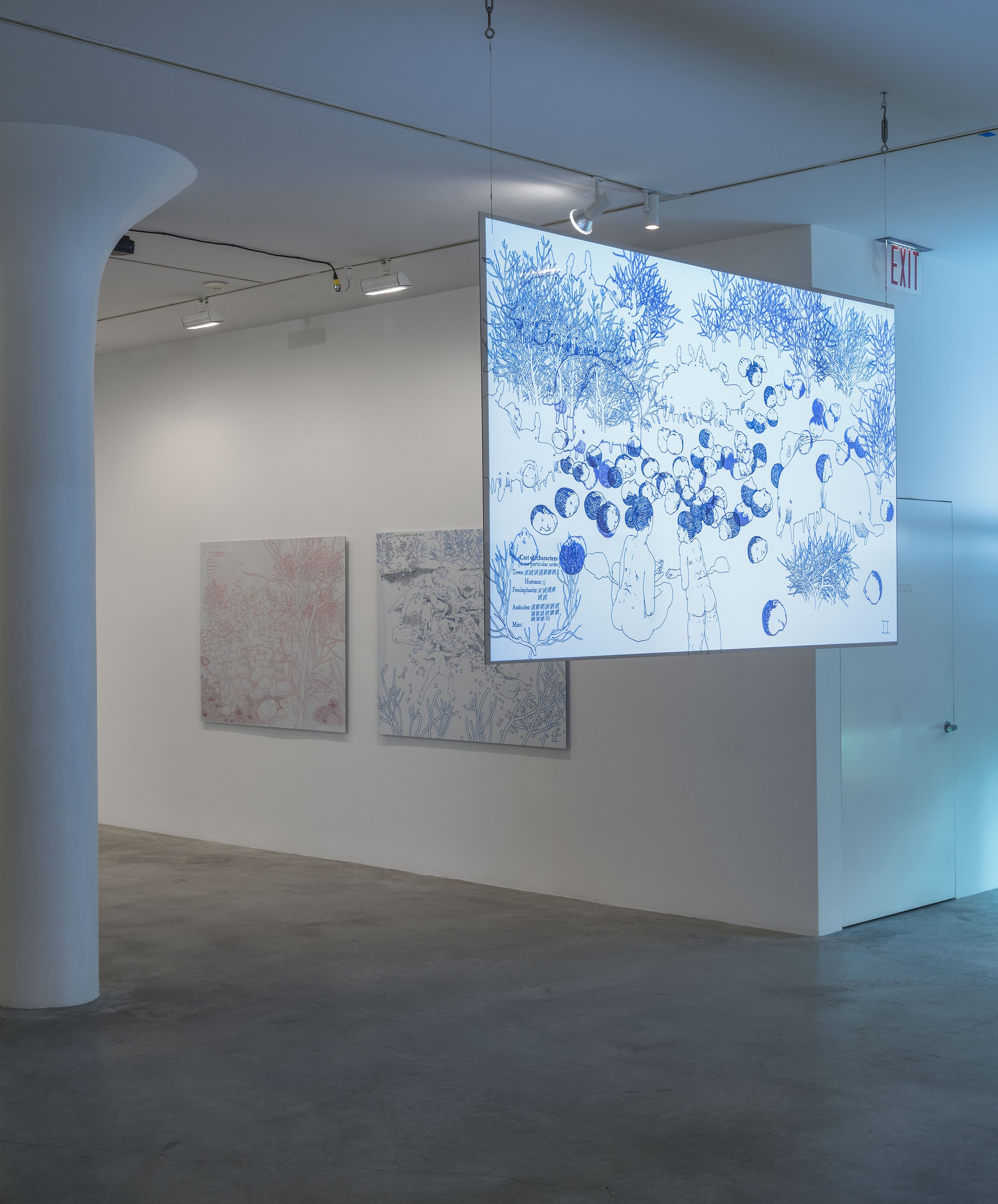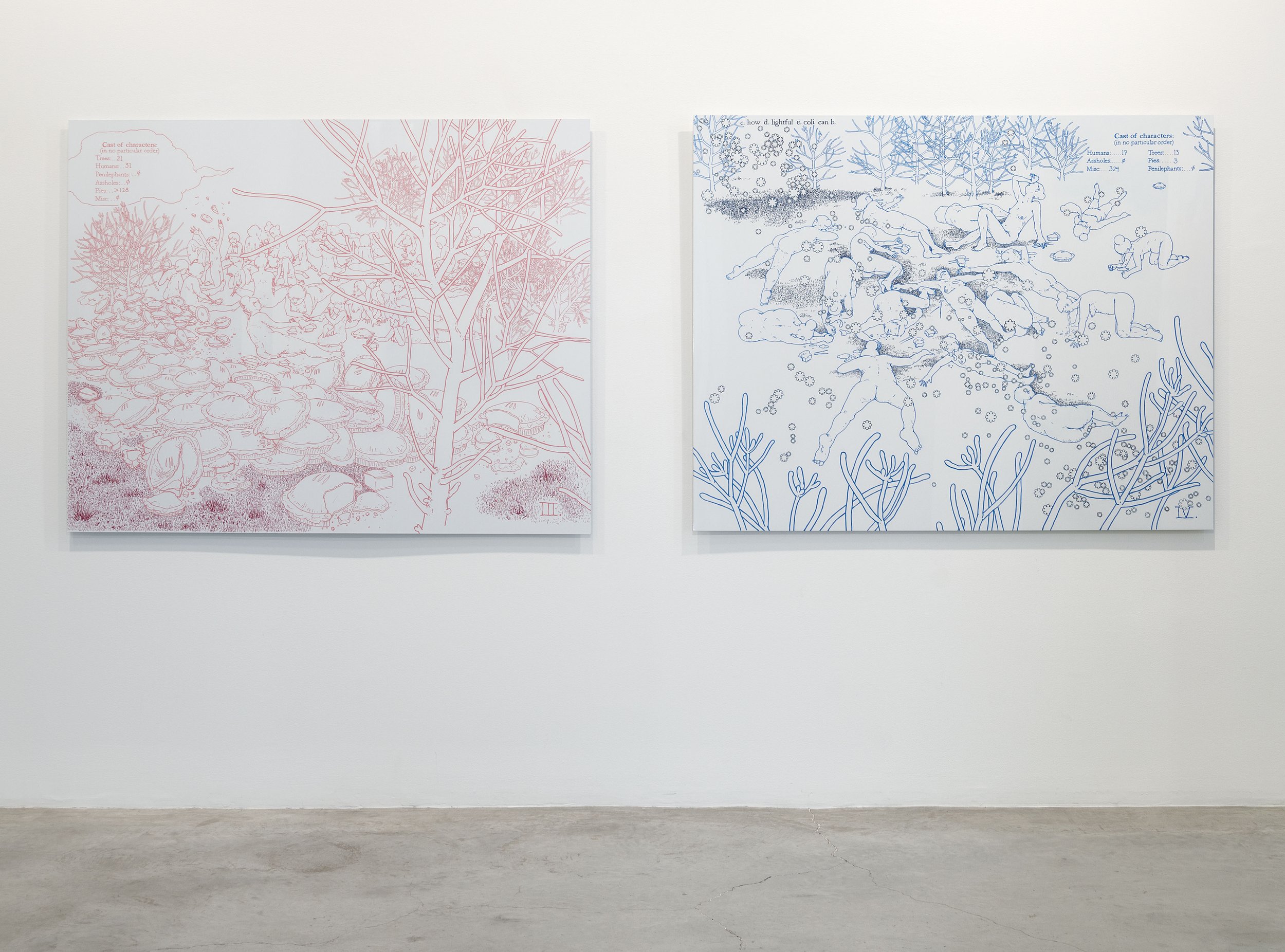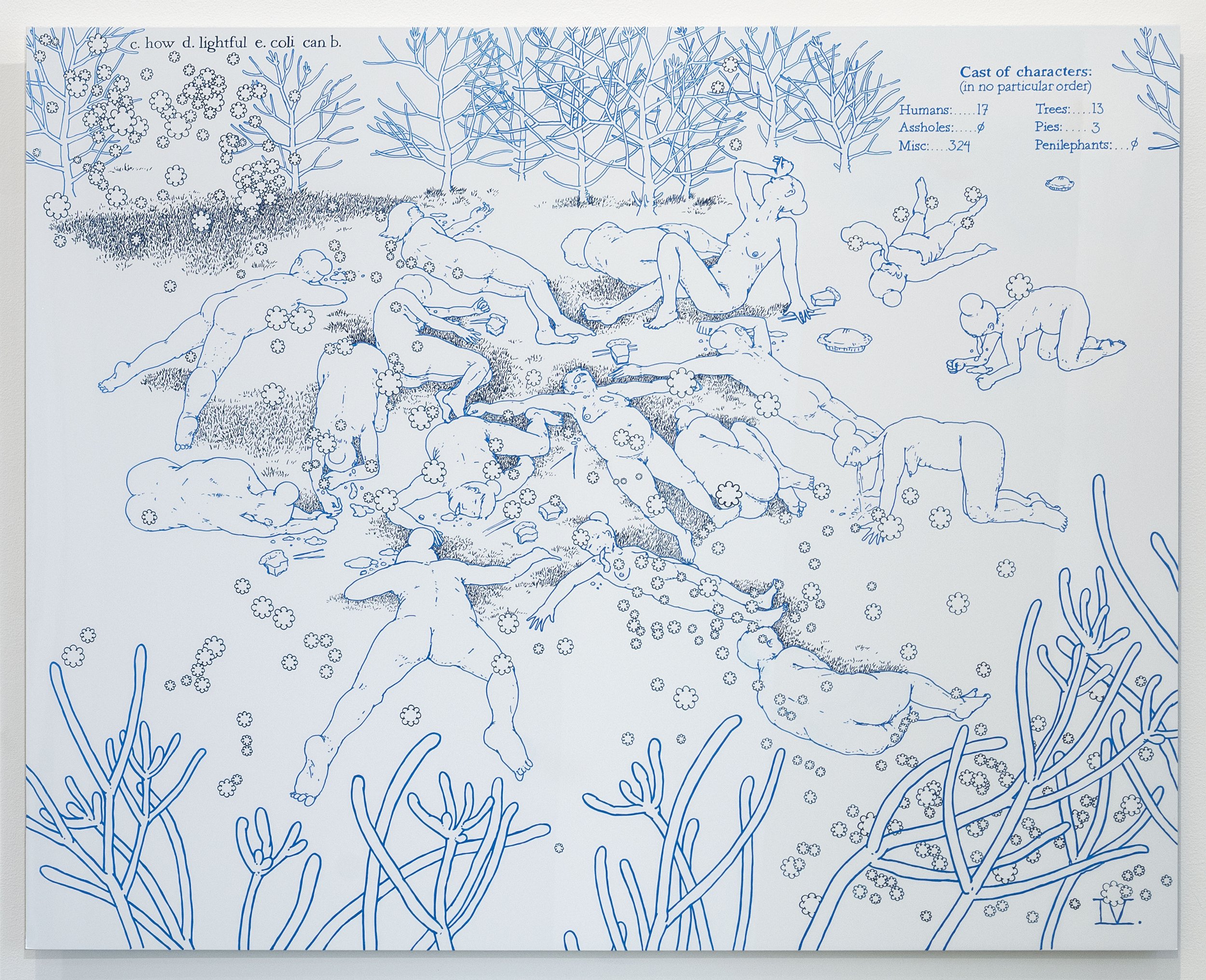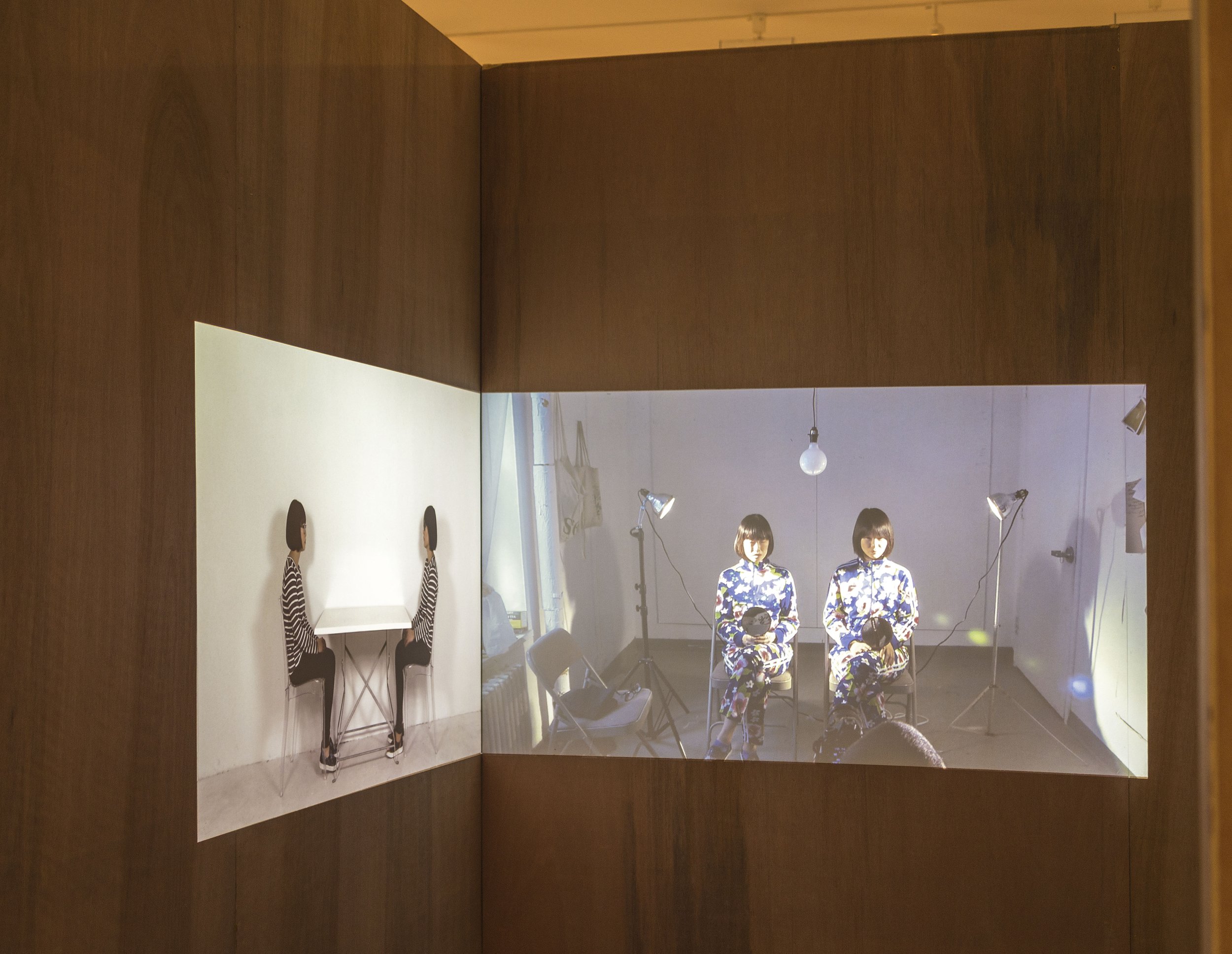Nicole Maloof
Bio: Nicole Maloof (American, b. Seoul, S. Korea) received her BFA in Painting and BA in Chemistry from Boston University. Her work draws upon a diversity of interests—interests that also led her to pursue chemistry research at Harvard and a Fulbright teaching grant in South Korea. Her current practice includes drawing, animation, printmaking, and video as she layers narrative imagery with text, numbers, and science puns.
Thesis Exhibition




Artist Statement:
How do you use the body as a means of representing age, gender, race, etc.?
I am not looking to portray or point to particular demographics of people solely for the sake of representation. For instance, I do not draw female bodies simply to represent women. I am more interested in the cultural role/space that particular bodies have historically inhabited, and so drawing gives me the freedom to play with, mimic, or break these structures. I prefer to draw bodies en masse, where I can get into a mindset of storytelling that lies somewhere in between the individual and the aggregate.
Why is drawing relevant to your work as your main medium?
Even though being in school has allowed me to expand my practice, drawing still remains central to how I approach and create images. Line gives me everything that I need: a direc- tion, form, immediacy, and I find it close to the gesture of writing. Drawing is so directly connected to how I think about the world that the act is almost compulsive.
One word.
Layers
“The visual field is not neutral to the question of race;
it is itself a racial formation, an episteme, hegemonic
and forceful.”
— Judith Butler,
“Endangered/Endangering: Schematic Racism and White Paranoia,”
in Reading Rodney King/Reading Urban Uprising, edited by
Robert Gooding-Williams(New York: Routledge, 1993), 17.
“Up to the end of the sixteenth century, resemblance
played a constructive role in the knowledge of Western culture.”
— Michel Foucault, The Order of Things, (New York: Random House,
Inc., 1970), 17.
“The gap between overall structure and underlying components
is the symptom of a lack of information: the elements are
too numerous, their exact whereabouts are unknown, there exist
too many hiatus in their trajectories, and the ways in which
they intermingle has not been grasped.”
— Bruno Latour, “Tarde’s idea of quantification,”
in The Social After Gabriel Tarde, edited by Matei Candea
(New York: Routledge, 2010), 146
